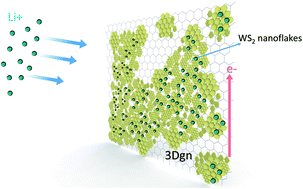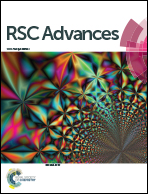WS2–3D graphene nano-architecture networks for high performance anode materials of lithium ion batteries†
Abstract
WS2 nanoflakes were grown on three-dimensional graphene networks (3Dgn) synthesized via a simple chemical vapor deposition (CVD) method. As anode materials for lithium-ion battery applications, the 3Dgn network not only provides robust mechanical support for the WS2 nanostructure, but also enhances its conductivity and ionic kinetics, leading to an overall improvement in electrochemical performance of WS2 compared to the commercial WS2 powder. The WS2–3Dgn nanocomposites can deliver reversible capacities of 927 and 416 mA h g−1 at current densities of 100 and 1500 mA g−1, respectively. At current density of 200 mA g−1, WS2–3Dgn nanocomposites can retain a capacity of 748 mA h g−1 after 500 cycles with Coulombic Efficiency (CE) higher than 98%, indicating outstanding cycling stability. The improved electrochemical performance is attributed to the synergistic effect between the WS2 nanoflakes and the highly conductive 3Dgn network as well as their rationally designed nano-architecture. These results demonstrate a feasible and simple method to synthesize WS2 based hybrid nanocomposites on 3Dgn for next generation high performance LIBs electrode materials.


 Please wait while we load your content...
Please wait while we load your content...